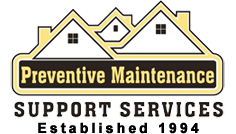Chimneys have long been an integral part of homes, providing a means to safely vent smoke and gases from fireplaces and stoves. However, over time, chimneys can become susceptible to various types of damage due to weathering, poor maintenance, and usage. Addressing chimney damage promptly is crucial not only for the efficient functioning of the chimney but also for the safety of the occupants and the structural integrity of the building. In this article, we will explore the common types of chimney damage and the appropriate ways to address them.
1. Cracked Masonry:
Cracks in masonry are among the most prevalent types of chimney damage. These cracks can occur due to freeze-thaw cycles, settling of the foundation, or even seismic activity. Cracked masonry can lead to water infiltration, which can further exacerbate the problem during freeze-thaw cycles.
Addressing the Issue:
- For minor cracks, applying a high-quality chimney sealant can help prevent water intrusion and further deterioration.
- Larger cracks may require professional attention. A chimney mason can assess the severity of the damage and perform tuckpointing or repointing to restore the structural integrity of the chimney.
2. Chimney Crown Damage:
The chimney crown is the topmost part of the chimney that covers the masonry and helps prevent water from entering the chimney structure. Over time, chimney crowns can develop cracks, leading to water penetration, which can cause significant damage.
Addressing the Issue:
- Cracks in the chimney crown should be repaired using a specialized crown sealant to prevent water infiltration.
- For more extensive damage, a professional may need to reconstruct or repair the chimney crown.
3. Flue Liner Cracks:
The flue liner is an essential component of the chimney that directs smoke and gases out of the home. Cracks in the flue liner can result from the high temperatures experienced during combustion, as well as from corrosive byproducts of combustion.
Addressing the Issue:
- Small cracks can sometimes be repaired with specialized heat-resistant sealants.
- In cases of extensive or severe damage, it’s recommended to replace the flue liner. A professional chimney sweep can determine the best course of action.
4. Water Damage:
Water is one of the primary culprits behind chimney damage. Water infiltration can weaken masonry, corrode metal components, and cause deterioration over time. It can also lead to mold growth and other issues inside the chimney and the home.
Addressing the Issue:
- Preventive measures such as installing a chimney cap and waterproofing the chimney can help keep water out.
- Regular inspections can identify early signs of water damage, allowing for timely repairs.
5. Creosote Buildup:
Creosote is a highly flammable substance that accumulates on the walls of the chimney flue as a byproduct of burning wood. A buildup of creosote can restrict airflow, increase the risk of chimney fires, and reduce the efficiency of the chimney.
Addressing the Issue:
- Regular chimney cleaning by a certified chimney sweep is crucial to remove creosote buildup.
- Proper burning practices, such as using well-seasoned wood and maintaining a fire, can help minimize creosote accumulation.
6. Structural Instability:
Over time, the structural integrity of a chimney can be compromised due to factors like settlement, earthquakes, or poor construction. A leaning or unstable chimney poses a severe safety hazard.
Addressing the Issue:
- Professional assessment by a structural engineer is necessary to determine the extent of the instability.
- Depending on the severity, solutions may range from reinforcing the chimney to partial or complete rebuilding.
7. Animal Intrusion:
Chimneys without proper protection can become a nesting ground for animals, birds, and debris. These intrusions can block airflow, leading to poor ventilation and potential fire hazards.
Addressing the Issue:
- Installing a chimney cap with mesh screening can prevent animals from entering while still allowing proper ventilation.
- Regular chimney inspections can identify any existing nests or blockages that need to be removed.
Conclusion:
Maintaining a functional and safe chimney is essential for the well-being of both the chimney itself and the occupants of the home. Regular inspections, proper maintenance, and addressing chimney damage promptly are crucial to preventing more extensive and costly repairs down the line. Whether it’s cracked masonry, damaged flue liners, water infiltration, or any other type of chimney issue, seeking professional assistance and adhering to recommended maintenance practices can ensure that your chimney continues to serve its purpose effectively and safely.



